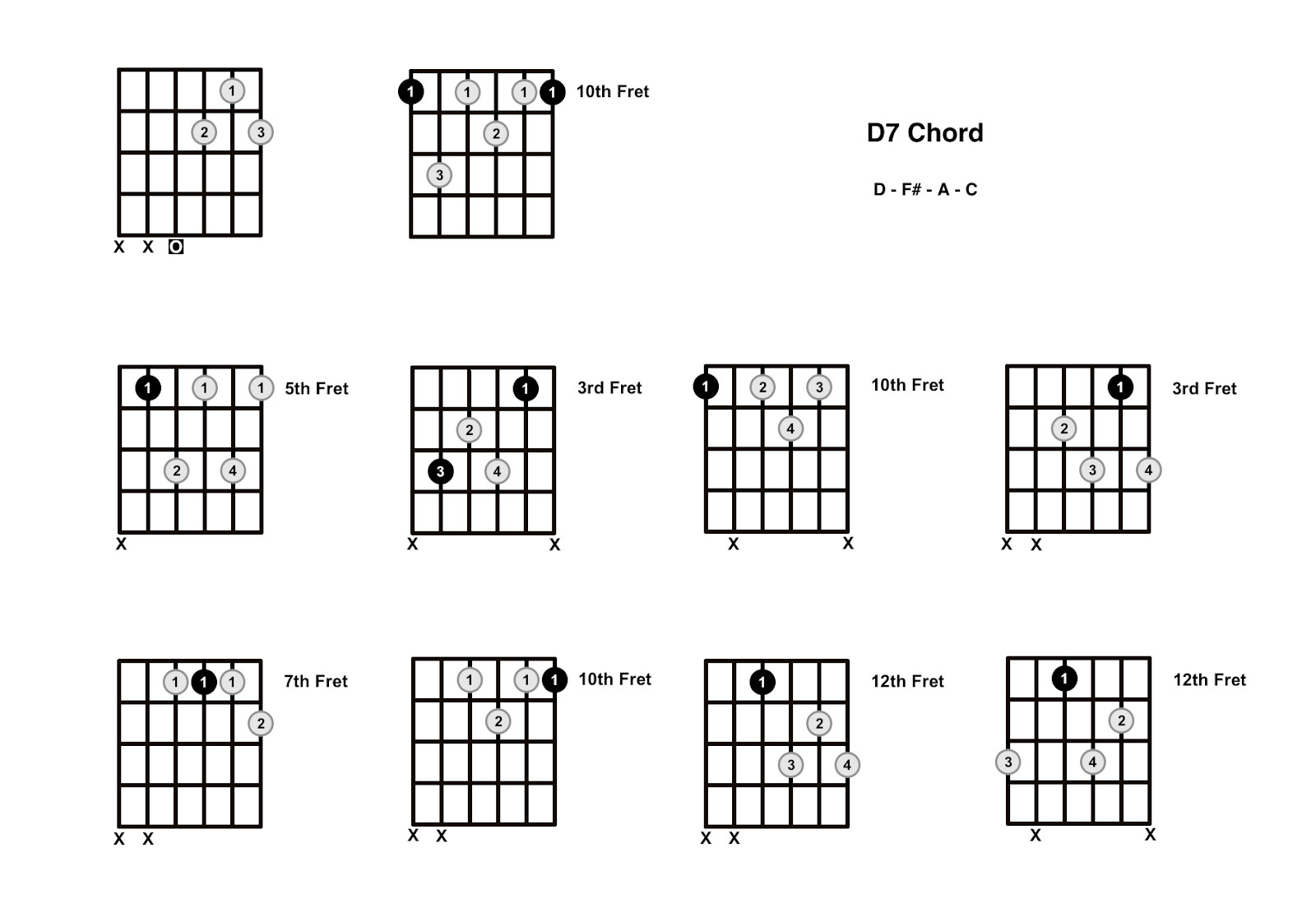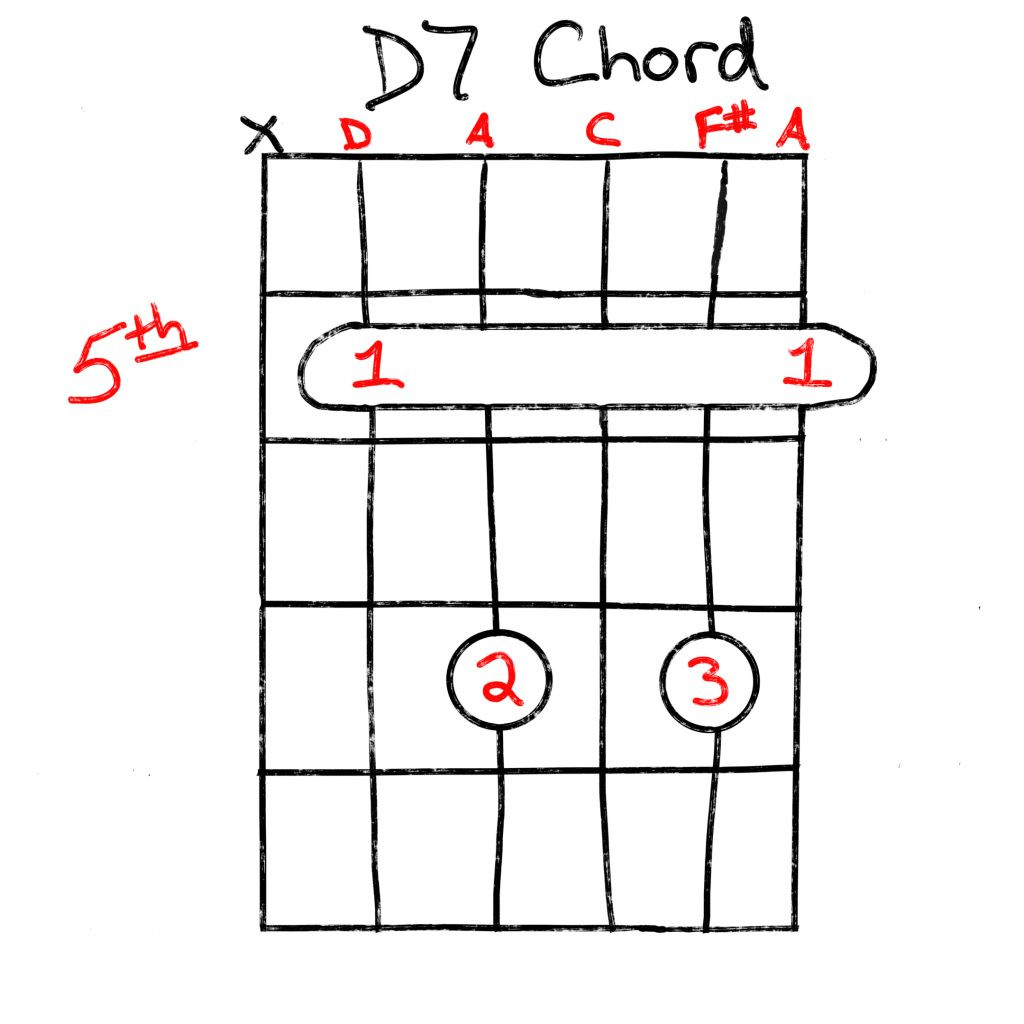Have you ever encountered the D7 Guitar Chord and felt unsure how to play it? Or perhaps you’re looking to understand how this versatile chord can enrich your guitar playing? You’ve come to the right place. This guide will provide you with everything you need to know about the D7 guitar chord, transforming you from a beginner to someone who can confidently use this essential chord in your musical journey.
The D7 chord, also known as the D dominant seventh chord, is a vibrant and frequently used chord in various genres, from country and rock to jazz and blues. It’s similar in function to the B7 guitar chord, adding a unique flavor and harmonic color to your playing. Its distinctive sound creates a sense of anticipation and resolution, making it a powerful tool in chord progressions and songwriting.
Learning the D7 chord is a crucial step for any aspiring guitarist. Its versatility and prevalence in countless songs make it an indispensable part of your chord vocabulary. Whether you’re strumming mellow tunes or exploring more complex musical pieces, mastering the D7 chord will significantly expand your musical expression.
Let’s dive into the different ways you can play the D7 chord and unlock its potential in your guitar playing.
Understanding the D7 Chord: Notes and Theory
Before we get into finger positions, let’s understand what makes up a D7 chord. The D7 chord is a four-note chord built upon the D major scale. It consists of the following notes:
- D (Root): The foundational note of the chord, giving it its name.
- F# (Major Third): Provides the major quality to the chord.
- A (Perfect Fifth): A stable and consonant interval within the chord.
- C (Minor Seventh): This is the defining note that transforms a D major chord into a D dominant seventh chord. It adds a characteristic “dominant” flavor, creating tension and a desire to resolve.
In music theory, the D7 chord functions as a dominant chord, often leading to chords like G major or G minor. This dominant function is what gives the D7 chord its characteristic sound – a blend of brightness and a slight yearning that makes it so effective in creating musical interest and movement.
How to Play the Open D7 Chord on Guitar
The most common and often easiest way to play the D7 chord is in its open position. This voicing is perfect for beginners and widely used in many songs. Here’s how to form the open D7 chord:
- First Finger (Index Finger): Place your index finger on the 2nd fret of the G string (3rd string from the top).
- Second Finger (Middle Finger): Place your middle finger on the 2nd fret of the high E string (1st string from the bottom).
- Third Finger (Ring Finger): Place your ring finger on the 3rd fret of the B string (2nd string from the top).
Make sure your fingertips are just behind the fret, and apply enough pressure to get a clear sound without buzzing.
 D7 Chord Diagram: Open Position with Finger Numbers
D7 Chord Diagram: Open Position with Finger Numbers
Image alt text: D7 guitar chord diagram in open position, showing finger placements on the fretboard with finger numbers indicated.
Strumming the D7 Chord: When strumming the open D7 chord, be careful not to play the Low E string (6th string). Start your strum from the A string (5th string) downwards. This is a common mistake for beginners, so focus on strumming only the correct strings for a clean D7 sound.
Exploring Different D7 Chord Voicings
Once you’re comfortable with the open D7 chord, you can explore other variations to add depth and texture to your playing. Here are a few common D7 chord voicings:
D7 Chord with Open A String
This voicing is essentially the same as the open D7 chord, just described slightly differently for clarity. It emphasizes the open A string as the bass note of the chord, which is naturally part of the D7 chord in this position.
Finger Placement:
- First Finger: 2nd fret of the G string.
- Second Finger: 2nd fret of the high E string.
- Third Finger: 3rd fret of the B string.
Strum from the open A string downwards, avoiding the Low E string.
D7 Chord with Open G String
This description likely refers to the same open D7 shape. The open G string is naturally included when you strum the standard open D7 chord shape from the A string downwards. It’s not a distinct voicing but rather a clarification that the open G string is part of the chord.
Finger Placement:
- First Finger: 2nd fret of the G string.
- Second Finger: 3rd fret of the B string.
- Third Finger: 2nd fret of the high E string.
This finger placement description is actually for the standard Open D7 Chord – the finger placement is the same as the first open D7 description.
Barre D7 Chord
For a more movable and potentially richer sound, you can play the D7 chord as a barre chord. This form is useful for playing D7 in different positions up the neck. Here’s how to play a Barre D7 chord starting on the 5th fret:
- Barre: Use your index finger to barre across all six strings at the 5th fret.
- Ring Finger: Place your ring finger on the 7th fret of the A string (5th string).
- Pinky Finger: Place your pinky finger on the 7th fret of the D string (4th string).
- Middle Finger: Place your middle finger on the 6th fret of the G string (3rd string).
 Barre D7 Chord Diagram on 5th Fret
Barre D7 Chord Diagram on 5th Fret
Image alt text: Barre D7 guitar chord diagram on the 5th fret, illustrating finger positions for a movable D7 chord shape.
Strumming the Barre D7 Chord: Strum all six strings for this barre chord voicing to achieve a full and powerful D7 sound.
You can move this barre chord shape up and down the neck to play D7 in different keys and positions. For example, to play an E7 barre chord, move this shape up two frets.
The D7 Chord in Popular Songs
The D7 chord is featured in countless songs across various genres. Learning to play it opens up a vast repertoire of music for you to explore. Here are a few well-known songs that prominently use the D7 chord:
-
“Can’t Help Falling in Love” – Elvis Presley: This timeless classic, released in 1961, beautifully utilizes the D7 chord in its chorus. The D7 progression contributes to the song’s gentle and romantic melody, creating its signature heartfelt feel. The simple yet effective use of D7 in this song highlights its ability to add emotional depth.
-
“Ain’t No Sunshine” – Bill Withers: Released in 1971, this soulful hit is instantly recognizable for its repeating chord progression, which heavily features the D7 chord. Practicing “Ain’t No Sunshine” is an excellent way to get comfortable with the D7 chord and its rhythmic application. The song’s melancholic yet catchy nature is driven by the prominent use of D7.
-
“Brown Eyed Girl” – Van Morrison: This iconic 1967 song, a long-time favorite on the Billboard charts, makes significant use of the D7 chord throughout. “Brown Eyed Girl” is a perfect song to learn once you’ve mastered the D7, allowing you to play along with a classic and understand how the D7 chord contributes to its upbeat and nostalgic vibe.
These are just a few examples, and as you explore more songs, you’ll find the D7 chord appearing in blues standards, jazz progressions, country tunes, and even modern pop music.
Incorporating the D7 Chord into Your Playing
Now that you know how to play the D7 chord, how can you use it musically? Here are a few tips:
- Chord Progressions: Experiment with using the D7 chord in common chord progressions. In the key of G major, a typical progression might be G – C – D7 – G. The D7 acts as the dominant chord, creating tension that resolves back to the G chord.
- Transitions: Practice smooth transitions between the D7 chord and other chords you know, such as G, D major, A7, and C. Clean chord changes are crucial for fluid playing.
- Songwriting: Try incorporating the D7 chord into your own songwriting. See how it can add a touch of blues, jazz, or country flavor to your compositions.
- Ear Training: Listen to songs that use the D7 chord and try to identify its sound by ear. This will improve your musical intuition and your ability to recognize chords in different contexts.
Frequently Asked Questions about the D7 Guitar Chord
How do I use the D7 chord in a chord progression?
The D7 chord is most commonly used as a dominant chord. In the key of G major, for example, it naturally leads to the G chord. A typical progression is G – C – D7 – G. In the key of D major, it often leads to a G major chord, creating a V7-I (dominant-tonic) movement if you consider G to be temporarily the tonic.
Can I substitute the D7 chord for a D major chord?
Yes, in many cases, you can substitute a D7 chord for a D major chord. The D7 adds a dominant 7th interval, which introduces a bit more harmonic tension and a bluesier or jazzier feel compared to a plain D major chord. It can add color and dynamism to chord progressions.
What other chords can I use in combination with the D7 chord?
The D7 chord works well with a variety of chords depending on the key and style of music. Common chords to pair with D7 include:
- G Major: As mentioned, D7 often resolves to G major, creating a strong dominant-tonic relationship.
- G Minor: In blues or minor keys, D7 can also lead to G minor, creating a bluesy or minor dominant resolution.
- E Minor: In certain progressions, D7 can precede E minor, creating a different harmonic movement.
- A Minor or A Major: Depending on the musical context, A minor or A major can also follow D7.
Experiment with these combinations and listen to how the D7 chord interacts with each of them to expand your musical vocabulary and creativity.
Mastering the D7 guitar chord is a rewarding step in your guitar journey. With practice and exploration, you’ll find yourself using this versatile chord in countless musical situations, adding depth and richness to your playing. Keep practicing, and enjoy the journey of musical discovery!
